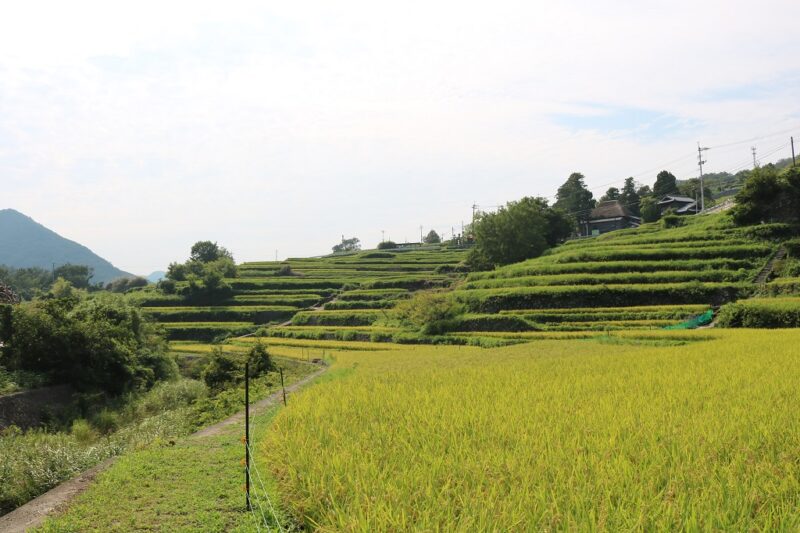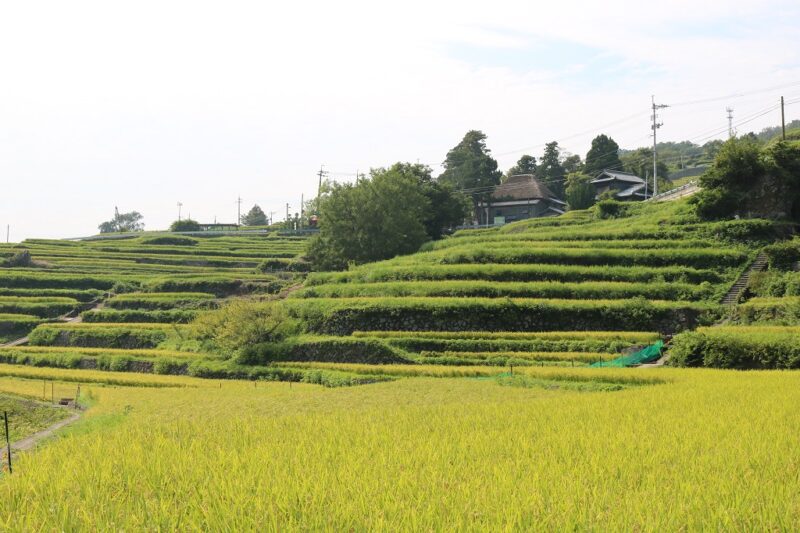Nakayama Senmaida (literally: Nakayama’s thousand terraced rice fields) is one of the most beautiful areas of Kagawa, as well as probably the only place in the prefecture where you can find terraced rice fields. The terraces are around 700 years old, and while there aren’t actually one thousand rice paddies, there are still several hundred of them.
The view is just superb and the fields are all over this side of the mountain with the village of Nakayama in the middle.
In Setouchi Triennale years, it is also the home of the wonderful giant bamboo installations of Wang Wen-Chih.
These pictures date from just a little more than two years ago, and it was one of the last times I went (I think I just went a couple of times more in the Fall, but the rice had already been harvested). Yes, Shodoshima is one of the many places I haven’t been to since the beginning of the pandemic, and it’s starting to feel a little long.
In case you’re wondering, the big traditional building is one of the last two traditional “countryside kabuki theaters” remaining on the island (there were up to 30 at some point). Nakayama is also an important place for this. The second theater just being a few hundred meters downhill.
I can’t wait to return and to show you more.



I visited to see Wang Wen-Chih’s extraordinary bamboo masterworks in 2013 and 2019, but had no idea the terraced rice field setting is a feature in itself. I am so accustomed to seeing terraced rice fields in Bali that, in my ignorance, I took them for granted. Nor did I understand the significance of the large building as a traditional kabuku theatre. Next time I’ll pay more attention! David, do you think the Trienniale will go ahead in 2022?
Hi Kate,
Yes, before going to Asia, I assumed that terraced rice fields were commonplace everywhere, but I find them to be pretty rare in Japan – or at least the part of Japan I’m familiar with. And yes, it’s because the area is culturally and historically important that it has been chosen as an art site from the very first Triennale.
I need to talk about the Kabuki theaters in more detail one day (I have mentioned them before but didn’t write a full detailed post) as they’re also a very unique feature of Shodoshima. You usually expect them in urban settings, not in the middle of nowhere.
As far as the Setouchi Triennale 2022 is concerned, I think it will happen (some smaller-scale art festivals have happened this summer), but probably at a smaller scale, and well… it doesn’t mean that foreign visitors will be allowed into the country, so it may not be very “international.”
Honestly, I don’t have recent updates. I usually started getting some this time of the year, so we’ll see.